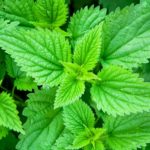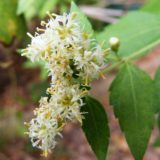Natural Herbs That Are Smoked as Stimulants

How Many Plants Have Stimulating Effects When Smoked
The Earth is filled with botanical mysteries, but some of the plants that grow around the world have been long resolved to be powerful natural stimulants when smoked. Tribes of nearly all regions of the globe have discovered stimulant-like properties from a variety of herbs, and almost all cultures have had their smoking stimulant of choice. For many recent years (centuries), Tobacco has been the most popularly smoked plant for its high nicotine content, and is most commonly known in Western cultures. The truth is, however, there are many herbs which can provide stimulation from inhalation, and they are no secret to other cultures.
List of Plants With Stimulating Effects When Smoked
Many cultures have been using a variety of plants and herbs for their stimulating effects during inhalation. In fact, smoking plants to stimulate the mind and body is a tradition that stretches back thousands of years. This list of natural stimulants is in no particular order.
 Calamus Root
Calamus Root
Calamus as a long history of cultural significance on the Balkan Peninsula and in the surrounding Black Sea regions. It is considered legendary to many ancient tribes, but is also employed in today, and very strongly so in present-day Egypt. Although Calamus has many uses, it is very commonly combined with other herbs to create smoking blends that substitute for tobacco. Sometimes, Calamus Root is combined with tobacco itself, for a stronger stimulating smoke. Calamus Root is also known by its scientific name, Acorus calamus, and also by its other common name, Sweet Flag.
Damiana
Damiana is one of the most frequently smoked herbs as a substitute for both, Tobacco and Cannabis alike. In large quantities, it can have effects similar to cannabis, but in lighter doses it is stimulating like Tobacco. Typically Damiana is not smoked alone, but with a combination of other psychoactive herbs in a smoking blend. It is regularly hailed as a “legal high,” but most people do not understand how to properly use it. The inebriating effects from Damiana typically come from a drink preparation, while smoking Damiana has been used as a social herb, an aphrodisiac, and for energy. Damiana is also known by its scientific name, Turnera diffusa.
Kava Kava
Kava has been one of the world’s most favorite social drinks and is considered a ceremonial herb by many cultures around the world. It is most popularly prepared as a tea, however, it has also been smoked in many cultures. It makes more sense to vaporize Kava, however, the smoking effects are most definitely stimulating and well known to many of the tribes in the tropical regions where the plant is native. Typically, Kava is only stimulating in smaller, lighter doses. When too much Kava is consumed, it can produce a sedating, inebriation. Kava is also known by its scientific name, Piper methysticum.
Lobelia
Lobelia is well-known for having a high content of nicotine and has been dubbed by many to be “Wild Tobacco.” The leaves and herbage are frequently smoked throughout North American Indian tribes, most notably by the Crow Indians. Some strains have been found throughout Central and South America as well and are very popularly smoked there for the stimulating effects produced, with little to no irritation. Lobelia is also known by its scientific name, Lobelia inflata (aka Indian tobacco), and also Lobelia tupa (aka Devil’s tobacco).
 Nettle
Nettle
Common Nettle is found to contain Scopoletin and has been used in many cultures around the world as a tobacco substitute. The herb can be smoked and is said to provide a relaxing, yet stimulating effect. Nettle is also known by its scientific name, Urtica dioica.
Tobacco
Tobacco may be the most well-known and employed plant as a smoking blend, and especially as a stimulant. It has been used by Native Americans and Indian cultures for hundreds, perhaps thousands of years. Technically, Tobacco originated in Central and South America, especially the Amazon…but has since spread throughout North America as well. It has been spread through cultivation around the world and is one of the largest commercially produced plants for smoking in the world. Tobacco leads in nicotine content, which is why it remains one of the most commonly used stimulants by inhalation. Tobacco is also known by its scientific name, Nicotiana tabacum, although there are many species which produce nicotine and are smokable.
Human Tradition: Smoking Plants As Stimulants
Smoking will always be a human tradition, whether it is upheld or not in modern times. In fact, one could make the argument that smoking has been evolving, slowly around the world into vaping. In first world territories, vaping seems to now be the preferred nicotine intake method. Any plant that can be effective after 3000+ degrees Fahrenheit combustion, can also be vaped to the optimum necessary temperature to release the same alkaloids (and with better efficiency). Nonetheless, tribes around the world still smoke, and will for many years to come. Smoking for stimulating effects will remain a favorite pastime in some cultures, even if it is a poor health decision. And these herbs are all excellent choices if one is looking for a “tobacco substitute” that must still be smoked.
Disclaimer: Smoking any plant material has been proven carcinogenic. Vaping has not yet been fully researched, however, it is considered by many to be a safer alternative, no matter the plant. These plants can be smoked for their stimulating effects, but the effects can be so easily achieved from other administration methods. BotanicalShaman.com is not a doctor or medical professional, and this article is for informational purposes only.




